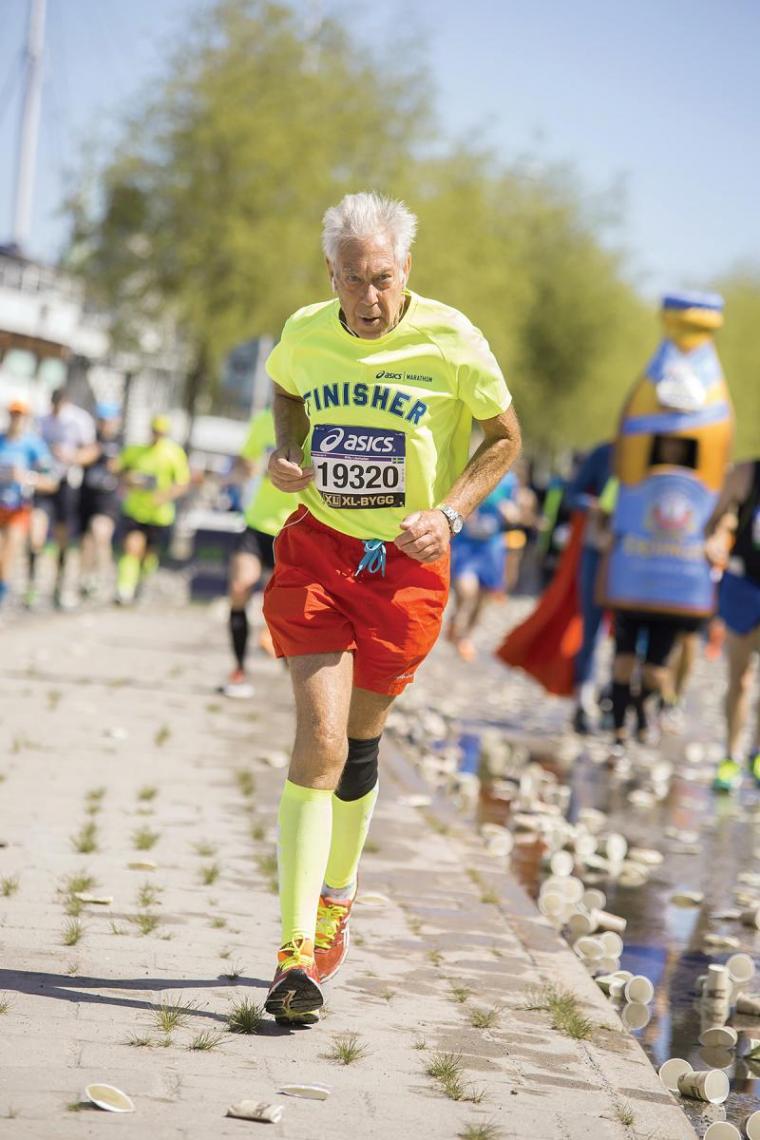
 WITH THE VANGUARD OF THE BABY BOOMERS now past 70, this generation, weaned on jogging and then moving through yoga, Pilates and Zumba, continues to be active well into their eighth decade and longer. While their spirits are still young and willing, there are some concessions that must be made to their age and changes in the body that accompany those accumulations of years.
WITH THE VANGUARD OF THE BABY BOOMERS now past 70, this generation, weaned on jogging and then moving through yoga, Pilates and Zumba, continues to be active well into their eighth decade and longer. While their spirits are still young and willing, there are some concessions that must be made to their age and changes in the body that accompany those accumulations of years.
That does not mean dumbing down the competition or padding the equipment with wads of foam rubber but it does mean that support and precautions appropriate to the participants must be provided. Aspects of the facility from architecture to the weather must be considered. When it comes to seniors themselves, bones, joints and muscles, hearts and lungs, seeing and hearing needs and weaknesses all need to be addressed.
Where and When is as Important as Who
While there are clearly precautions and considerations that need to be made for the participants in a an event for senior athletes and these will be addressed shortly; first, a critical look at the venue is in order. Attention needs to be paid to be sure that the facility has sufficient accommodations for the participants. The weather should be neither too hot nor too cold and there should be adequate shade and hydration. If there are multiple levels, escalators and elevators should be available for those challenged by stairs. A critical eye should be used to ensure the safety of the participants is not compromised, while still allowing for an exciting event.
Because of the real probability of those taking part in events having significant medical histories, each should be asked to have a current summary of their individual medical history with details on surgeries, medications, implanted devices and allergies. This information would be vital in the event of an injury or illness.
The Orthopedic Side of Life
The unfortunate truth is that the bones, joints and muscles of older athletes have often weathered the changes wrought by arthritis, osteoporosis and a variety of muscular ailments. Given those effects, attention must be paid to necessary precautions for participants so affected. An overall consideration is to minimize trip hazards that can lead to a fall. Unmarked single steps between levels, rugs or mats that can result in a curled edge or buckled surface, wet areas or other changes in level or footing must all be screened for and eliminated.
Arthritis
Younger joints enjoy smooth articular surfaces, adequate lubrication and strong tendons and ligaments, yielding joints that can sustain vigorous activity without injury. The passage of years results in loss of functioning cartilage and articular surfaces, paucity of lubricating synovial fluid and weakened tendons and ligaments. Some participants may have partial or total joint replacements, which may also result in instability at times. Having individuals well-versed in joint issues would be an important consideration, as well as appropriate braces or supports should they be needed for an injured athlete.
Osteoporosis
Many older women and some older men as well, suffer from the weakening of the bone matrix called osteoporosis, or osteopenia in a milder form. Bones with this condition are more likely to break under stress or with a fall. Provisions need to be made for adequate padding at potential points of impact or surfaces upon which one might fall, to help soften the blow and lessen the chances of a fracture. As well, those helping and monitoring must suspect bony injury even when the event causing the injury may not seem sufficient to result in bone damage.
Nerve and Muscular Diseases
Often age brings with it slowing of the reflexes and weakening of selective muscle groups. While those training for events may have good function in the musculoskeletal areas necessary to an event, other portions of their systems may not be so attuned, with the potential for resultant injury. While there may be no practical way to prevent injury, again, trainers and those assisting need to be able to recognize problems and direct the individual to appropriate medical services. (This often results in objections from the one injured.)
Hearts and Lungs
While musculoskeletal issues may be more readily apparent, occult weaknesses in the cardiopulmonary system may be more deadly. Here, especially, knowing the significant medical history of those involved, medications and limitations becomes of supreme importance. One would hope that older athletes will seek advice and clearance from their personal physicians before engaging in potentially vigorous activities.
 Heart Diseases
Heart Diseases
There are several types of heart disease that can impact the health of an athlete. Cardiovascular disease, with potential narrowing of an artery that feeds the heart muscle, can result in a shortage of oxygen being supplied to that muscle during vigorous exercise. Called “ischemia,” this condition can cause sensations ranging from shortness of breath to chest discomfort or pressure or frank chest pain. Ultimately, this lack of oxygen can result in a myocardial infarction, a heart attack. Having the appropriate personnel and equipment on hand, including ACLS (Advanced Cardiac Life Support) may be critical to the life of a participant. Being able, quickly at the site, to assess the person’s blood pressure and pulse, pulse oximetry and potentially EKG and being able to communicate that to medical personnel, would be appropriate.
Pulmonary Diseases
While one would hope no one going out for senior games was still smoking, the ravages of times past can still leave an impact on the breathing ability of such people. As well, non-smokers can have other forms of chronic lung disease, including asthma and other types of restrictive and obstructive lung conditions. The ability to assess someone having trouble breathing, with auscultation, evaluating pulse oximetry and administration of supplemental oxygen if indicated would all be worth considering.
Seeing and Hearing
With age comes dimming of the senses and certainly accommodations may be necessary to address those weaknesses. Although many may be keen of sight and discerning of sound, likely not all involved are so fortunate. Here are some thoughts about addressing these needs.
Visual Impairment Needs
Asking spectacle wearers to bring an extra set or to wear glasses that are designed for sports with unbreakable lenses and secure headbands would be wise. It may also be helpful to have some “glasses repair kits” handy, with those little screws that can come out and screwdrivers to match. Signage should be clear and unambiguous, with good lighting throughout the venue. Lighting is particularly important in non-event areas, such as hallways or restrooms. If there is an older population of a different ethnic background, signage in an appropriate language may be needed at key points to promote movement of people.
Hearing Impairment Needs
Allowing that many seniors may have impaired hearing and have not acted on any assistance, one must be sure that any aural information is received accurately by those being addressed. If some are wearing hearing aids, looping the facility to allow them to hear the information through the “telephone loop” would be a benefit. For participants who are profoundly hearing impaired, providing signing interpreters may be needed, unless some form of visual translation with electronic signs could be used. Amplification needs must be balanced between being loud enough for the participants to hear over the ambient noise and being too loud, which could cause hearing damage to others present.
No Need to Fear
With all of these warnings and precautions, it would seem as though a line of ambulances should be at the ready when the starting gun, not too loudly, goes off, with the participants guardedly progressing through a safe venue, EMTs at the ready every few feet. Not! The honest view is that the majority of those participating in such events have been doing this for some time and are well prepared for the event, able to participate and aware of their limitations. While as always, preparations do need to be made for the unexpected, one should be able to have an event which allows the athletes the fullest opportunity to savor victory and avoid any pains of defeat. SDM

